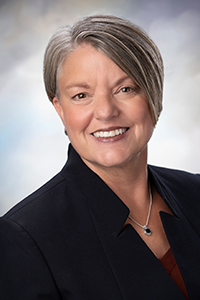Minnesota State College Southeast is celebrating a double anniversary this year - 75 Years in Winona and 50 Years in Red Wing
By Dr. Marsha Danielson, President, Minnesota State College Southeast
 In the coming academic year, Minnesota State College Southeast is celebrating a remarkable convergence of anniversaries - 75 years in Winona and 50 years in Red Wing!
In the coming academic year, Minnesota State College Southeast is celebrating a remarkable convergence of anniversaries - 75 years in Winona and 50 years in Red Wing!
- In 1949, our Winona Campus was founded as the Winona Area Vocational-Technical School. 2024 will mark 75 years of service to the Winona community and beyond.
- In 1973, the Red Wing Campus building at 308 Pioneer Road opened its doors to the public, making 2023 our 50th Anniversary in Red Wing.
This is an opportunity for us to connect, engage, and celebrate with our communities throughout the coming year. We have many special events planned (check our calendar).
Anniversaries mark a moment when we can pause to look back over our origins and reflect on the events that brought us to where we are today.
There is nothing humble about MSC Southeast's beginnings. In 1944, the US GI Bill was enacted to assist service men and women returning from World War II in starting new lives, with the skills needed to support their families.
The concept of vocational and technical education grew from there, and we continue those high ideals to this day with our commitment to education for employment, skill enhancement, retraining, and transfer.
The Winona Area Vocational-Technical School started in 1949 with just two programs for adult learners at Winona High School - auto mechanics and machine shop. As the number of students expanded, the need for more space became clear.
In September 1954, an addition was built at the high school to house the "vo-tech" programs. Finally, in 1966, a separate campus for the college was opened in Winona at 1250 Homer Road.
Programs at the new campus included auto body repair, auto mechanics, agriculture, business education, civil engineering, drafting and design, electronics, machine tool and die, practical nursing, and welding.
Not long after that, the Red Wing Area Vocational-Technical Institute began operations in 1972 with a handful of students: 3 in secretarial/clerical studies, 4 in truck driving, and 31 in practical nursing.
The campus on Pioneer Road in Red Wing was under construction at the time, and the doors opened 50 years ago in the fall of 1973. The vo-tech director, Ed Dunn, quickly established one of the programs that continues to make the Red Wing campus unique: musical instrument repair. Thus began the college's long legacy of attracting students from all over the world to work on violins, guitars, and band instruments.
The two campuses continued growing and developing along separate paths for many years, but in 1991, the state of Minnesota mandated a "mega-merger" of all public technical colleges, community colleges, and state universities into one system under the Minnesota Higher Education Board. Not long after, many campuses across the state were consolidated.
Winona and Red Wing became one college in 1992, first called the Red Wing/Winona Technical College, then changing the name to Minnesota State College - Southeast Technical in 1999.
Though the college already offered many classes in liberal arts and sciences, a change of mission was required to offer an associate of arts (AA) degree. There is an important advantage to students who attend a college that can offer an AA degree - the credits they take are readily transferred to other higher education institutions.
With the change of mission in 2016, came a corresponding change in our name. Minnesota State College Southeast is now a comprehensive technical and community college. We are a "both/and" college - offering a wealth of career and technical programs as well as degrees designed for transfer to four-year institutions.
As Minnesota State College Southeast launches our 50 & 75 Anniversary Year, we are proud to honor those who came before us for decades of service to the southeast region of Minnesota and far beyond.
We have been looking back fondly over our past history -- while looking forward to what the future holds! Keep an eye on our website at www.southeastmn.one/anniversary for updates as our anniversary year unfolds.